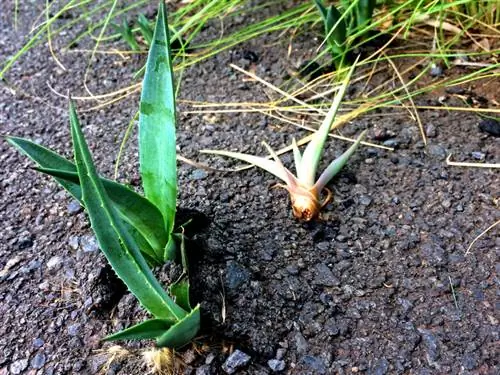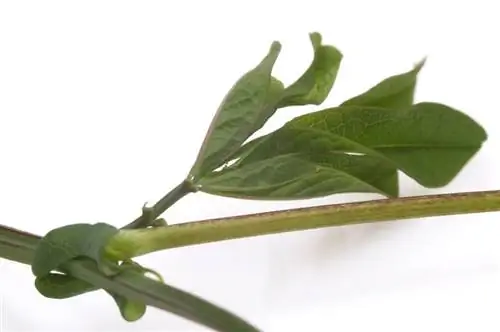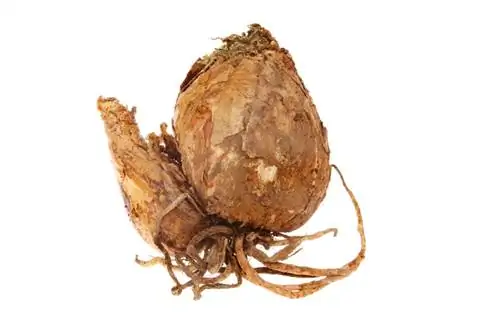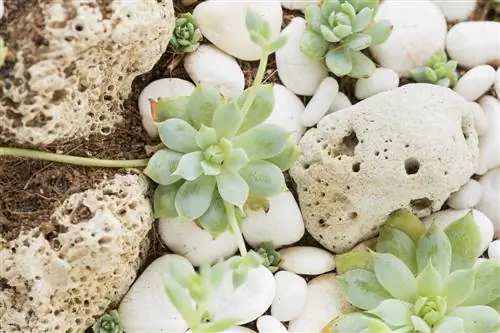- Author admin [email protected].
- Public 2023-12-16 16:46.
- Last modified 2025-01-23 11:20.
Agaves are very grateful garden and potted plants under the right location conditions, as they generally require relatively little care. Since propagating agaves through seeds is rather time-consuming and time-consuming, these plants are usually propagated through cuttings.
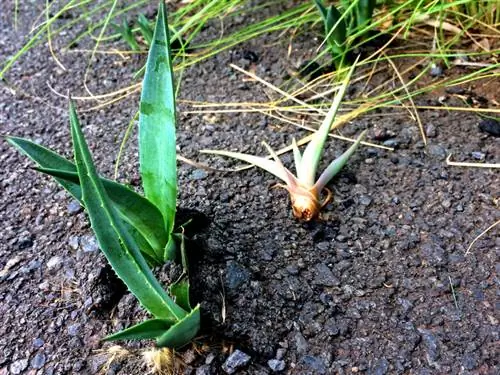
How do I get cuttings from an agave?
To obtain agave offshoots, carefully separate the children (side shoots) from the mother plant with a sharp knife and plant them in a sandy or gravel-rich substrate. Be sure to water the cuttings sparingly at first until they establish roots.
Prevent the death of flowering agaves by cuttings
Even if it does not apply to all types of agave, some of these so-called “century plants” actually only bloom after several decades and then most likely die immediately after flowering. Botanical research has shown that this death is directly related to the side shoots known as kindles, which form on the side of the agave stem and would usually continue to grow in the same place on the mother plant. You can therefore possibly prevent the death of a flowering agave if you cleanly separate the child with a sharp knife in good time and plant it in a separate pot for rooting and further cultivation.
Get cuttings easily when repotting
Since many agaves in this country are not hardy due to their sensitivity to frost, they are usually cared for in pots. The plants should be transplanted into a slightly larger planting container approximately every two to three years. This process offers a good opportunity for the propagation of the agaves, as the offshoots often grow below the surface of the earth and therefore already have their own roots. If these offshoots are removed at the same time as the agaves are repotted, which is necessary anyway, this means less stress and complications for the plants overall.
The best procedure for separating offshoots from agave plants
As utensils for separating and cultivating the offshoots you will need for the agaves:
- a sharp and clean knife
- a hard, straight surface like a planting table
- suitable planters and sandy or gravel-rich substrate
A suitable base in a comfortable working position makes it easy to separate the offshoots from the mother plant without slipping or causing any injuries. After cutting off, the cuttings should initially be watered very sparingly until roots have formed.
Tip
Please note that even hardy agaves are only really frost hardy after a certain age. Freshly obtained offshoots of these plants should therefore spend their first winter in a protected winter quarters.

